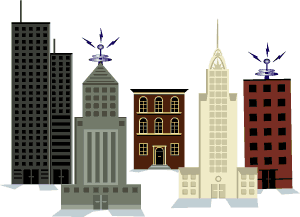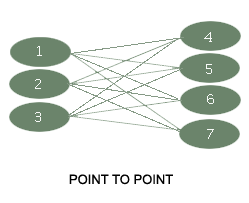 |
 |
 |
| |

Wi-Fi is a brand originally
licensed by the Wi-Fi Alliance to describe the underlying
technology of wireless local area networks (WLAN) based on the
IEEE 802.11 specifications. Wi-Fi is not so pervasive, and the
term so generic, that the brand is no longer protected and it
appears in Webster's Dictionary.
Wi-Fi was intended to be
used for mobile computing devices, such as laptops, in LANs, but
is now often used for increasingly more applications, including
Internet Access, gaming, and basic connectivity of consumer
electronics such as televisions and DVD players. There are even
more standards in development that will allow Wi-Fi to be used
by cars on highways in support of Intelligent Transportation
Systems in increase safety, gather statistics, and enable mobile
commerce IEEE 802.11p.
|
|
 |
 |
 |
|
 |
 |
 |
 |
| |
Call
today for a comprehensive quote for your connectivity needs!
269-683-7451 |
|
 |
 |
 |
|
|
 A Traditional point-to-point is a communications medium with
exactly two endpoints and no data or packet formatting. The host
computers at either end had to take full responsibility for
formatting the data transmitted between them. The connection
would often be implemented through an RS-232 interface.
Computers in close proximity may be connected by wires directly
between their interface cards.
A Traditional point-to-point is a communications medium with
exactly two endpoints and no data or packet formatting. The host
computers at either end had to take full responsibility for
formatting the data transmitted between them. The connection
would often be implemented through an RS-232 interface.
Computers in close proximity may be connected by wires directly
between their interface cards.
When connected at a distance, each end point would be fitted
with a modem to convert analog telecommunications signals into a
digital data stream. When the connection used a
telecommunications provider, the connections were called a
dedicated, leased or private line.
More recently, the term point-to-point telecommunications
relates to wireless data communications for Internet or
VoiceOver IP via radio frequencies in the multi-GHZ range. It
also includes technologies such as laser for telecommunications
but in all cases expects that the transmission medium is line of
sight and capable of being fairly tightly beamed from
transmitter to receiver |
|
 |
|
|